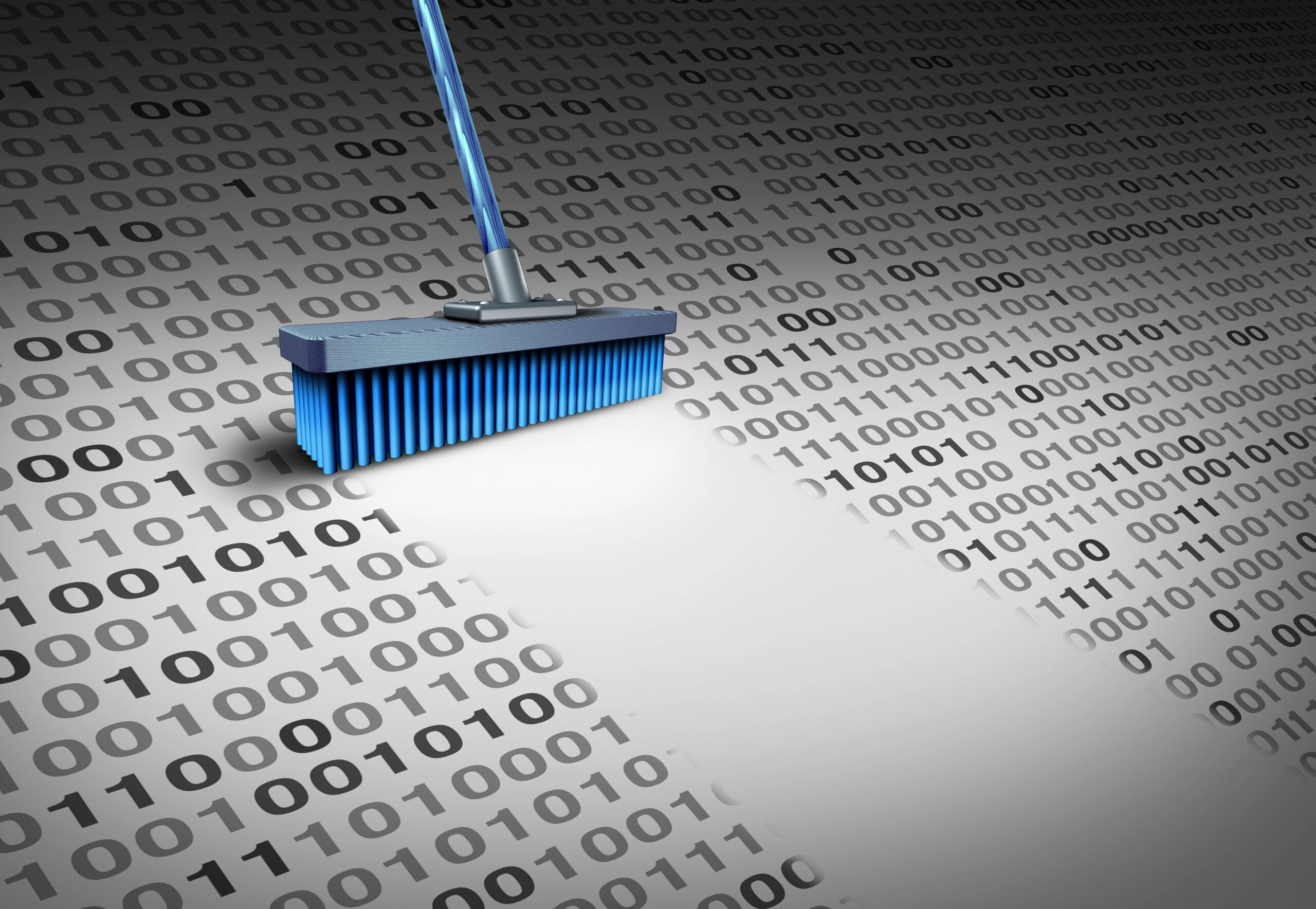In the realm of data science and artificial intelligence, the essential role of data cleaning aligns with the quality of insights. Delving into the world of AI and data-driven decision-making, realize that raw data is often messy, inconsistent, and riddled with errors. This is where data cleaning becomes an indispensable step in the data processing pipeline. By meticulously preparing and refining datasets, lay the foundation for accurate analyses and robust AI models. In this article, discover why data cleaning is crucial, how it impacts results, and how emerging technologies like large language models are revolutionizing this essential process.
What is The Essential Role of Data Cleaning and Why Does it Matter?

Data cleaning, also known as data cleansing or data scrubbing, is a crucial process in the data preparation pipeline. It involves identifying and correcting errors, inconsistencies, and inaccuracies in datasets to ensure their quality and reliability. As an IT professional, you’ll find that data cleaning is essential for producing accurate analyses and building effective AI models.
The essential role of data cleaning
Clean data is the foundation of all data-driven decision-making processes. When you work with raw data, it often contains errors, duplicates, or inconsistencies that can lead to flawed insights and unreliable AI model predictions. By implementing thorough data cleaning procedures, you can:
Improve the accuracy of your analyses
Enhance the performance of machine learning algorithms
Reduce bias in your datasets
Ensure compliance with data quality standards
Remember, the adage “garbage in, garbage out” applies particularly well to data analysis and AI model training.
Common Data Cleaning Tasks
Data cleaning encompasses a wide range of activities, including:
Removing duplicate records
Handling missing values
Standardizing data formats
Correcting spelling and syntax errors
Identifying and addressing outliers
By systematically addressing these issues, you can significantly improve the quality of your datasets, leading to more reliable insights and better-performing AI models.
The Role of Automation in Data Cleaning
- As datasets grow larger and more complex, manual data cleaning becomes increasingly time-consuming and error-prone. Fortunately, automated tools and techniques, including those powered by AI and machine learning, can streamline the data-cleaning process. These tools can quickly identify patterns, inconsistencies, and errors that might be missed by human eyes, allowing you to clean vast amounts of data more efficiently and effectively.
Key Data Cleaning Tasks: Detection, Diagnosis and Editing
Data cleaning is a critical process in ensuring the quality and reliability of your datasets. As you embark on this essential task, you’ll need to focus on three key areas: detection, diagnosis, and editing. Let’s explore each of these in detail.
Detection
- Your first step in data cleaning is to detect anomalies and inconsistencies in your dataset. This involves scanning for missing values, outliers, and duplicate entries. You can use various techniques such as statistical analysis, visualization tools, and automated data profiling software to identify these issues. For instance, you might create histograms or box plots to spot unusual distributions or extreme values in your data.
Diagnosis
- Once you’ve detected potential problems, you’ll need to diagnose their root causes. This step involves investigating why certain data points are missing, why outliers exist, or why duplicates have occurred. You might need to consult with domain experts, review data collection processes, or examine source systems to understand the origin of these issues. Proper diagnosis is crucial as it informs your decision-making in the editing phase.
Editing
The final step is to edit or transform your data to address the identified issues. This could involve:
Imputing missing values using statistical methods or machine learning techniques
Removing or adjusting outliers based on your diagnosis
Merging duplicate records or removing redundant entries
Standardizing formats (e.g., date formats, units of measurement)
Correcting spelling errors or inconsistencies in categorical data
Remember, the goal of editing is not to manipulate data to fit your expectations but to enhance its accuracy and consistency for analysis. Always document your cleaning process thoroughly to ensure transparency and reproducibility in your data preparation workflow.
By systematically addressing these key data-cleaning tasks, you’ll significantly improve the quality of your datasets, leading to more reliable AI models and data-driven insights.
Automating Data Cleaning with Large Language Models
In the era of big data, automating data-cleaning processes has become essential for efficient and accurate data analysis. Large Language Models (LLMs) are emerging as powerful tools to streamline and enhance data cleaning tasks, offering IT professionals new ways to improve data quality and analysis efficiency.
Leveraging LLMs for Data Cleaning
- LLMs can significantly accelerate data cleaning processes by automating various tasks that traditionally require manual intervention. These models can identify and correct spelling errors, standardize formatting, and even detect anomalies in large datasets. By utilizing natural language processing capabilities, LLMs can understand context and nuance, making them particularly effective for cleaning text-based data.
Enhancing Data Quality
One of the key advantages of using LLMs for data cleaning is their ability to improve data consistency and accuracy. These models can:
Identify and resolve inconsistencies in data entry
Standardize formatting across diverse data sources
Detect and flag potential errors or outliers for human review
This enhanced data quality leads to more reliable insights and better performance of AI models downstream.
Increasing Efficiency and Scalability
- Automating data cleaning with LLMs allows organizations to process larger volumes of data more quickly and efficiently. This scalability is crucial in today’s data-driven landscape, where the ability to rapidly clean and analyze vast datasets can provide a significant competitive advantage.
Challenges and Considerations
- While LLMs offer tremendous potential for automating data cleaning, it’s important to approach their implementation thoughtfully. Ensure that the models are properly trained on domain-specific data and that there are mechanisms in place for human oversight. Additionally, consider the ethical implications of using AI for data cleaning, particularly when dealing with sensitive or personal information.
By leveraging LLMs for data cleaning, you can significantly enhance the quality and efficiency of your data processing pipeline, ultimately leading to more accurate analyses and better-informed decision-making.
The Impact of Data Cleaning on AI and Analytics
Enhancing Model Accuracy and Reliability
- Data cleaning plays a crucial role in the success of your AI models and analytics efforts. When you invest time in properly cleaning your data, you significantly improve the accuracy and reliability of your results. By removing errors, inconsistencies, and biases from raw data, you create a solid foundation for your AI algorithms to work with. This process ensures that your models are trained on high-quality data, leading to more precise predictions and insights.
Improving Decision-Making Processes
- Clean data directly impacts the quality of your decision-making processes. When you base your analyses on clean, well-structured data, you can trust the insights you derive. This reliability is crucial for businesses and organizations that rely on data-driven decision-making. By eliminating data discrepancies and inaccuracies, you reduce the risk of making costly mistakes based on faulty information.
Streamlining Data Processing and Analysis
- Effective data cleaning streamlines your overall data processing and analysis workflow. When you work with clean data, you spend less time troubleshooting issues caused by data inconsistencies or errors. This efficiency allows you to focus more on deriving valuable insights and developing sophisticated AI models. Additionally, clean data often requires less computational power to process, potentially reducing your infrastructure costs and improving processing speeds.
Leveraging LLMs for Advanced Data Cleaning
- Large Language Models (LLMs) are revolutionizing the data-cleaning process. By incorporating LLMs into your data-cleaning workflow, you can automate many tedious and time-consuming tasks. These models can identify patterns, anomalies, and inconsistencies in your data more efficiently than traditional methods. Leveraging LLMs for data cleaning not only enhances the quality of your data but also significantly improves the speed and scalability of your data preparation processes.
Best Practices for Data Cleaning
To ensure the highest quality of your datasets, consider implementing these best practices for data cleaning:
Establish a Systematic Approach
- Begin by developing a standardized process for data cleaning. This systematic approach should include steps for identifying and addressing common issues such as missing values, duplicates, and outliers. By establishing a consistent methodology, you’ll improve efficiency and reduce the likelihood of overlooking critical data quality issues.
Automate Where Possible
- Leverage automation tools and scripts to streamline your data-cleaning process. Automated routines can quickly identify and correct formatting inconsistencies, standardize date formats, and flag potential errors for review. This not only saves time but also reduces the risk of human error in repetitive tasks.
Validate and Verify
- Always cross-reference your cleaned data against the source to ensure accuracy. Implement validation rules to catch inconsistencies and illogical values. For instance, set up checks to flag impossible date ranges or numerical values that fall outside expected parameters. This verification step is crucial for maintaining data integrity throughout the cleaning process.
Document Your Process
- Maintain detailed documentation of your data cleaning procedures, including any assumptions made and transformations applied. This documentation serves as a valuable reference for future data analysis and ensures transparency in your data handling methods. It also facilitates collaboration among team members and enables easier troubleshooting when issues arise.
Preserve Raw Data
- Always keep a copy of the original, uncleaned dataset. This allows you to revert changes if necessary and provides a point of comparison to assess the impact of your cleaning efforts. Storing raw data separately also ensures you have a reliable backup in case of any unintended alterations during the cleaning process.
By adhering to these best practices, you’ll significantly enhance the quality and reliability of your datasets, leading to more accurate analyses and robust AI models. Remember, effective data cleaning is an ongoing process that requires vigilance and continuous refinement of your techniques.
In Summary
As you continue to navigate the complex landscape of AI and data-driven insights, remember that data cleaning remains an indispensable step in your data processing journey. By prioritizing this crucial task, you ensure the integrity and reliability of your datasets, leading to more accurate AI models and meaningful business insights. Embrace the power of data cleaning to unlock the full potential of your data assets and consider leveraging emerging technologies like LLMs to streamline and enhance your data cleaning processes. With clean, high-quality data as your foundation, you’ll be well-equipped to drive innovation and make informed decisions in today’s data-centric world.
More Stories
Ultra Ethernet Sets New Standard for Intelligent, Scalable Data Movement in IoT and Edge AI
In the fast-changing world of IoT and edge AI, the Ultra Ethernet Consortium (UEC) launched its groundbreaking 1.0 specification. This new standard redefines Ethernet’s role in smart, scalable data movement.
Hitachi Empowers Real-Time Data Integration with EverFlex AI Data Hub
In today’s data-driven world, Hitachi Vantara’s EverFlex AI Data Hub becomes a crucial tool for real-time data integration.
Smart Energy Integration Accelerates AI Data Center Evolution in Malaysia
Malaysia’s smart energy & AI data initiative pioneers a venture that blends smart energy integration with AI-driven data center development
Meta’s AI Ambitions Intensify with Strategic Stake in Scale AI
In today’s AI-driven era, Meta is making bold moves to stay ahead in the competitive tech race. It has invested between $14.3 billion and $14.8 billion in Scale AI.
Meta AI App Adds Warning to Prevent Accidental Sharing of Private Chats
In today's world, digital privacy is more important than ever. Meta has taken a major step to protect user data....
Barbie Embraces AI as Mattel and OpenAI Reimagine Smart Play
n the ever-evolving world of play, Mattel begins a groundbreaking journey by teaming up with OpenAI. This partnership brings artificial intelligence to the iconic Barbie brand. By the end of 2024, Barbie’s first AI-powered toy may debut.


